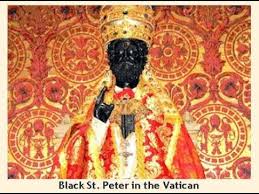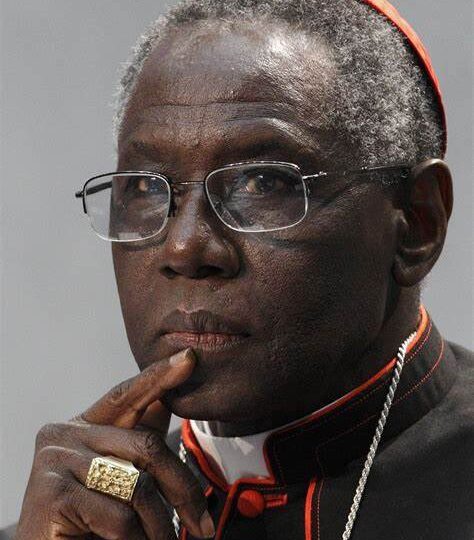In the annals of the Catholic Church, the papacy is often associated with European lineage. However, history reveals that three early popes hailed from Africa, challenging modern perceptions and highlighting the diverse roots of the Church.
The early Christian Church was far more diverse than many realize, with North Africa (modern-day Libya, Tunisia, Algeria, and Egypt) being a major center of Christian thought. Three popes from this era are believed to have been of African descent:
Pope Victor I (189–199 AD)
Born in the Roman province of Africa, Pope Victor I was the first known African pope. Pope is believed to be of Berber origin, was born in the Roman province of Africa, possibly in Leptis Magna (modern-day Libya). He holds the distinction of being the first African pope. He is best remembered for:

- Establishing Easter Sunday: Victor I decreed that Easter should be celebrated on a Sunday, resolving a major dispute with Eastern churches.
- Latin Liturgy: He was among the first popes to use Latin instead of Greek in Church rites, shaping Western Christian tradition.
- Excommunication Threat: He clashed with Eastern bishops over the Easter date controversy, showing early papal authority.
Pope Miltiades (311–314 AD)
Also known as Melchiades, Pope Miltiades was born in Africa, though specific details about his birthplace remain uncertain. His papacy coincided with a transformative period in Christian history. His papacy was significant because:
- Edict of Milan (313 AD): He reigned when Emperor Constantine legalized Christianity, ending brutal persecutions.
- First Lateran Palace: Constantine gifted him the palace that became the papal residence.
- Donatist Controversy: He presided over early debates on Christian purity after persecution.
Pope Gelasius I (492–496 AD)
Born in Rome to African parents, Pope Gelasius I’s heritage reflects the multicultural fabric of the early Church. A prolific writer, over 100 of his letters and several treatises have survived, addressing theological and administrative matters
Though less is known about his origins, Gelasius I is often considered the third African pope. His contributions include:
- “Two Swords” Doctrine: He articulated the separation of church and state, influencing medieval politics.
- Fought Paganism: He suppressed the Roman festival of Lupercalia (a precursor to Valentine’s Day).
- Strengthened Papal Authority: He emphasized Rome’s supremacy over other Christian centers.
Were they “Black” in the modern sense?
Given that North Africa was home to various ethnic groups—including Berbers, Phoenicians, and sub-Saharan Africans—it’s plausible these popes had darker complexions. However, historical records rarely describe skin color, leaving room for debate.
The Jesuit “Black Pope” – A Different Kind of Power
Beyond African popes, the term “Black Pope” has also been used to describe the Superior General of the Society of Jesus (Jesuits). This nickname arose because:
- Jesuit Influence: The Jesuits became the Church’s most powerful order, with global missions, education, and political influence.
- Black Robes: Their traditional black cassocks contrasted with the Pope’s white vestments.
- Shadow Power: Some believed the Jesuit leader had more covert influence than the Pope himself.
Controversy and Conspiracy Theories
The Jesuits have faced accusations of secrecy and manipulation, leading to myths about the “Black Pope” controlling world events. While exaggerated, their historical role in politics (such as in colonial missions and the Counter-Reformation) fueled such legends.
3. Why Has This History Been Overlooked?
The legacy of African popes and the “Black Pope” concept is rarely discussed due to:
- Eurocentric Church Narratives: As the Church’s power shifted to Europe, African contributions were minimized.
- Medieval Rewriting of History: Later Church historians often emphasized European saints and leaders.
- Modern Racial Perceptions: Discussions of race in antiquity are complex, as ancient people did not categorize identity as we do today.
Reflecting on Their Legacy
The contributions of these African popes underscore the early Church’s diversity and the significant role Africa played in shaping Christian doctrine and practice. Their leadership during formative periods of Church history challenges contemporary narratives and invites a broader appreciation of the Church’s multicultural origins.
The stories of African popes and the Jesuit “Black Pope” reveal a richer, more diverse Church history than many assume. Whether through the leadership of early African pontiffs or the formidable influence of the Jesuits, these figures shaped Christianity in profound ways.
As modern discussions on race and religion evolve, acknowledging these hidden histories allows for a fuller understanding of the Church’s past—and perhaps a more inclusive vision of its future.
As the Catholic Church continues to grow globally, particularly in Africa, the legacy of Popes Victor I, Miltiades, and Gelasius I serves as a testament to the universal nature of its mission and the rich tapestry of its history.
Did you know about these Black popes before? What other hidden histories should be explored? Share your thoughts in the comments!

